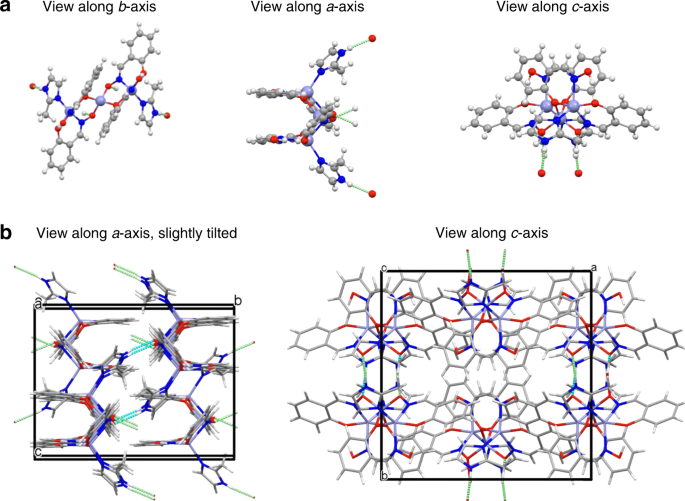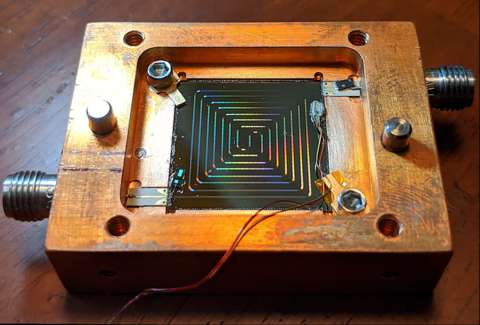(Scientists Design New Framework for Clean Water)
2020/11/24 アメリカ合衆国・ローレンスバークレー国立研究所(LBNL)

・ LBNL が、これまでにない吸着容量と速度で廃水から銅イオンを選択的に除去する新しい結晶性材料、亜鉛-イミダゾール・サルチルアルドキシム(zinc imidazole salicylaldoxime: ZIOS)を開発。
・ 同材料は、原子レベルの制御により栄養分や必須ミネラルを除いた特定の重金属イオンのみを選択的に除去する、最先端技術を上回る水処理技術の初めての青写真を提供する。細菌細胞を構成するタンパク質が特定の金属を選択して細胞代謝を調整するような、自然界による高度な機能の模倣を試みたもの。
・ 現行の水処理システムは、有害性や有用性に関わらず全ての溶質を取り出す「バルクな分離技術」。特定の微量成分を捕獲できる高選択性・高耐久性の材料は、水処理のコストとエネルギーの低減において不可欠な要素であり、廃水からの貴金属の回収の可能性も期待できる。
・ 同材料は、最大 52 日間水中にて高安定で、MOF(金属有機構造体)とは異なり、酸性鉱山廃水のpH 範囲に相当する酸性溶液でも機能し、最先端の銅吸着剤の 30~50 倍の速さで銅イオンを選択的に捕獲する。MOF や多孔性芳香族フレームワーク(PAF)に比べ、高い吸着能力と速度の達成に必要となる比表面積は小さいが、優れた能力を有する。
・ 同材料の微細孔(2~3Å)が水中で膨張し、周囲の水分子との相互作用で形成する「水素結合ネットワーク」が、同材料の能力の鍵であることを X 線の実験で発見。微細孔の膨張により、銅イオンを運ぶ水分子のより多量な流れ込みが促進され、銅イオンと同材料の間で配位結合の化学反応が起こる。
・ X 線による追加的な実験では、同材料の銅イオンへの選択性が 3 以下の pH で最も高いことを確認(酸性鉱山廃水の pH は通常 4 以下)。また、同材料の結晶格子構造は、排水後 1 ナノ秒以内で元のサイズに戻る。
・ 今後は他の汚染物質を選択的に除去する新設計原理について検討する。水科学や水処理産業では、廃水浄化に様々な種類の材料が開発されているが、酸性鉱山廃水からの重金属除去に向けた設計は少ないため、新材料 ZIOS の貢献が期待される。
・ 本研究は、米国エネルギー省(DOE)の科学局、エネルギー効率・再生可能エネルギー部(EERE)の地熱技術局(GTO)および LBNL の Laboratory Directed Research and Development(LDRD)プログラム
が支援した。
URL: https://newscenter.lbl.gov/2020/11/24/new-framework-for-clean-water/
<NEDO海外技術情報より>
(関連情報)
Nature Communications 掲載論文(フルテキスト)
A nature-inspired hydrogen-bonded supramolecular complex for selective copper ion removal from
water
URL: https://www.nature.com/articles/s41467-020-17757-6
Abstract
Herein, we present a scalable approach for the synthesis of a hydrogen-bonded organic–inorganic framework via coordination-driven supramolecular chemistry, for efficient remediation of trace heavy metal ions from water. In particular, using copper as our model ion of interest and inspired by nature’s use of histidine residues within the active sites of various copper binding proteins, we design a framework featuring pendant imidazole rings and copper-chelating salicylaldoxime, known as zinc imidazole salicylaldoxime supramolecule. This material is water-stable and exhibits unprecedented adsorption kinetics, up to 50 times faster than state-of-the-art materials for selective copper ion capture from water. Furthermore, selective copper removal is achieved using this material in a pH range that was proven ineffective with previously reported metal–organic frameworks. Molecular dynamics simulations show that this supramolecule can reversibly breathe water through lattice expansion and contraction, and that water is initially transported into the lattice through hopping between hydrogen-bond sites.



